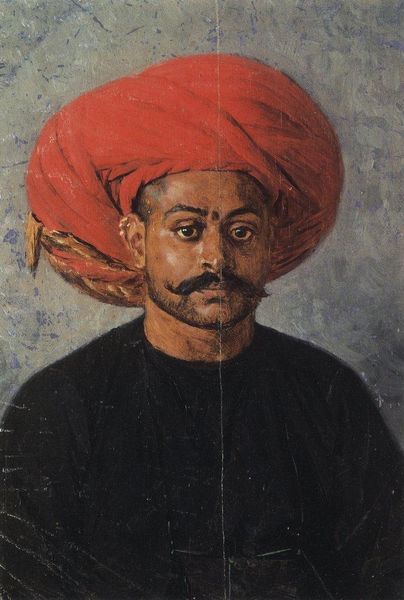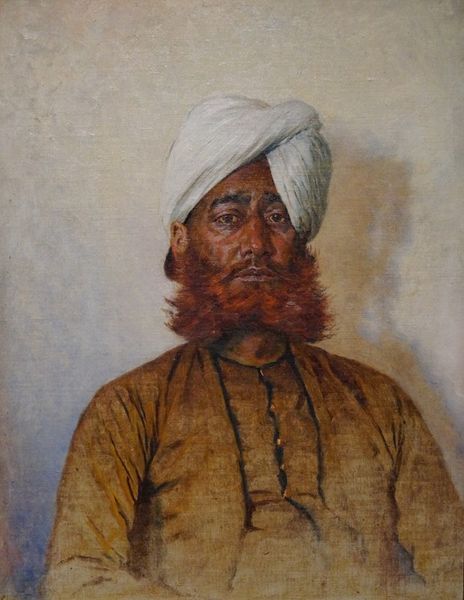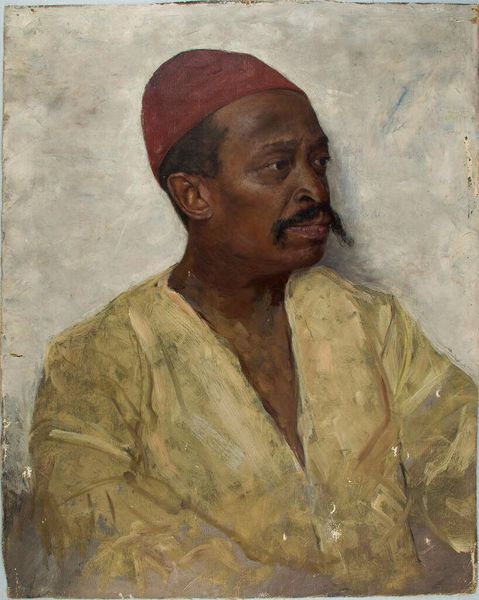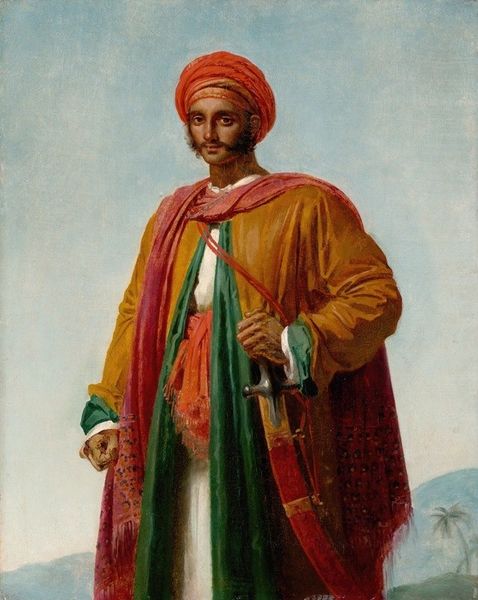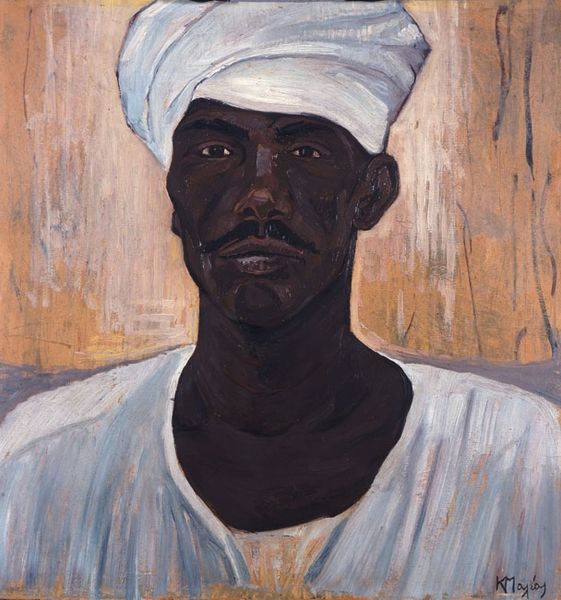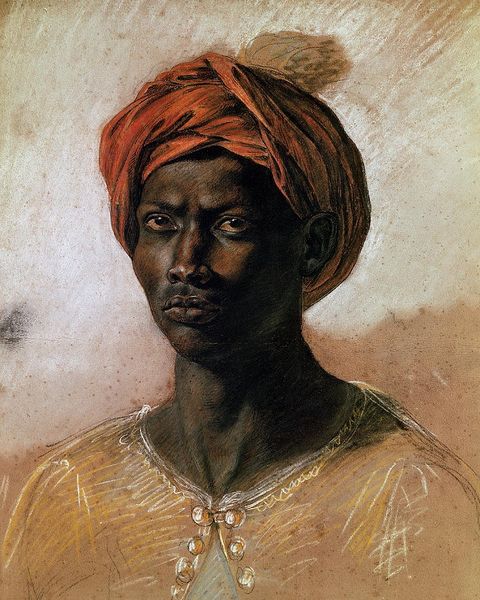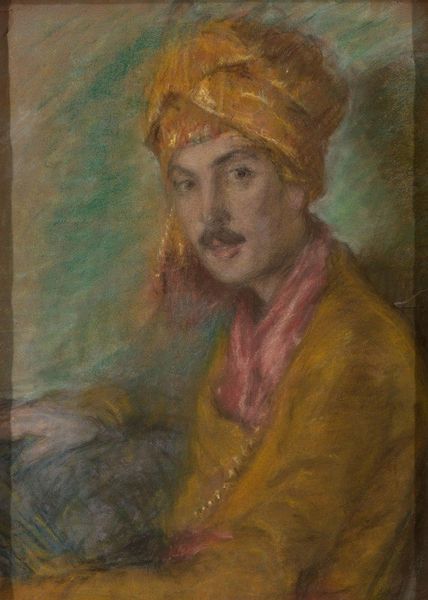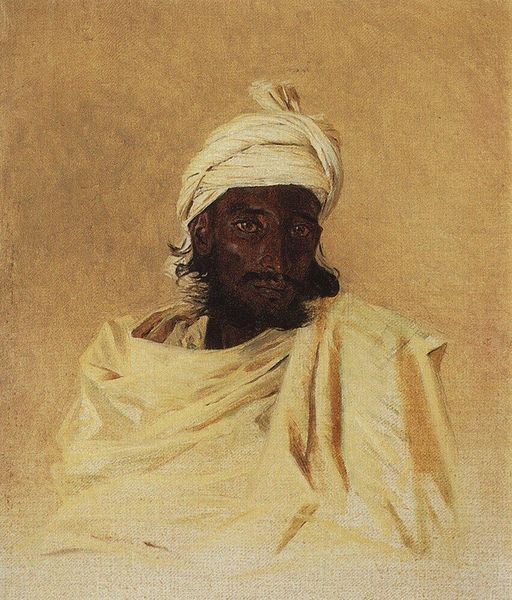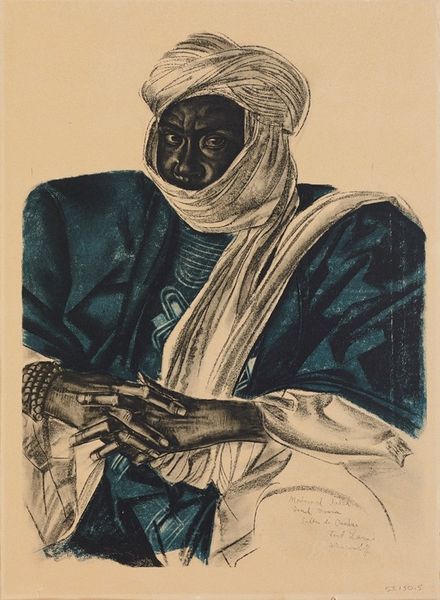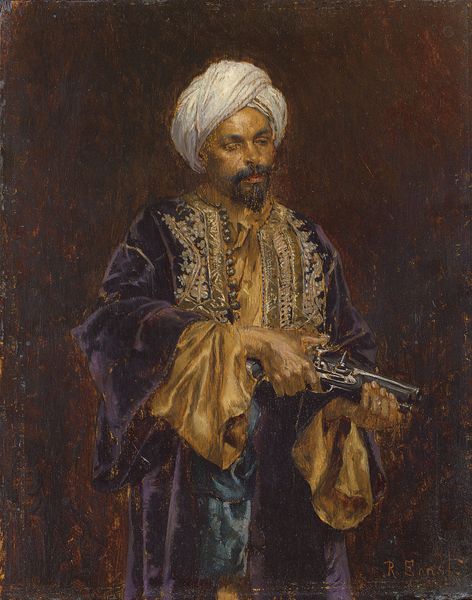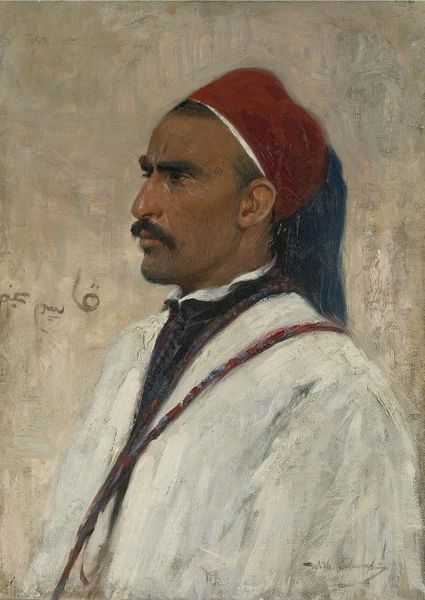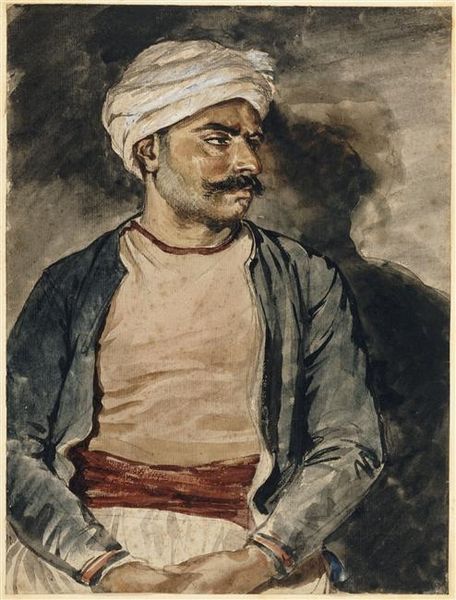
oil-paint
#
portrait
#
figurative
#
oil-paint
#
oil painting
#
portrait reference
#
orientalism
#
academic-art
#
realism
Copyright: Public Domain: Artvee
Editor: Here we have Vasily Vereshchagin's "Bania," created between 1874 and 1876, in oil. I’m struck by how immediate this portrait feels. His gaze is very direct. How do you read this portrait? Curator: Immediately, I see a dance of cultural symbols. Consider the man's turban, that specific shade of reddish-orange, contrasting sharply with the blue backdrop. Turbans, of course, signal identity, status, perhaps even regional origin. But what does that vivid color evoke for you? Is it fire, passion, perhaps something more earthy? Editor: It definitely pops! There’s also a bright yellow mark on his forehead, and gold jewelry. Is there something particular that signifies? Curator: Precisely! The yellow mark is likely a tilak, a Hindu religious symbol. The gold suggests wealth and perhaps a specific community tradition. But it is the layering of these signs that intrigues me. Vereshchagin, trained in Western academic style, portrays an Eastern subject. He is acutely aware of how those of different cultures perceive this 'other' person. What emotions arise as you look at the individual’s gaze set against those choices of symbolic representation? Editor: I notice a complexity, it isn't just a surface image but seems to want to say something deeper about cultural identity. Curator: Yes, precisely. This work shows a cultural dialogue frozen in paint. Even now, that dialogue continues as we consider its meanings, symbols, and how they resonate – or clash – across time and perception. Editor: It really highlights the lasting power of visual symbols. I will certainly remember this painting because it sparked my interest in cultural semiotics!
Comments
No comments
Be the first to comment and join the conversation on the ultimate creative platform.

